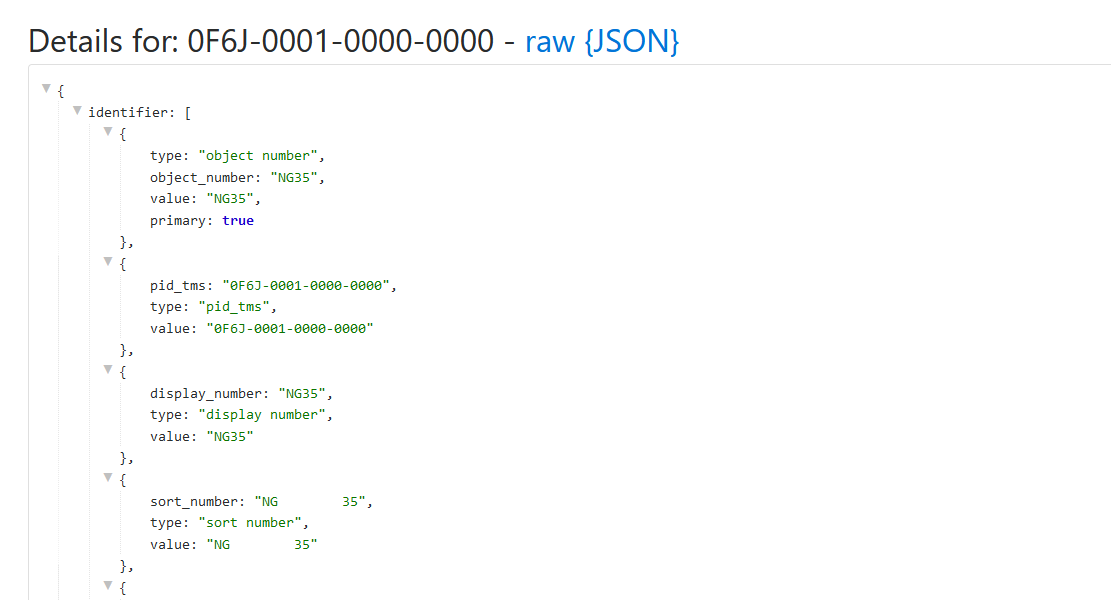Explanation
PIDs and their associated metadata can be made available in a machine readable format such as JSON or XML, via an API such as a SPARQL or OAI-PMH endpoint.
- This can be in addition to or instead of a human readable version
- Identifiers can be created by the organisation or an external agency
- Metadata should have an open license to enable reuse
Potential Benefits
- Collection items are persistently citable and resolvable
- Can be used internally across systems
- Can be used to track contents and location of the entire collection
- Allows bi-directional cross-linking
- Allows cross-searching of collections
- Collection information can be aggregated easily
- Others can reliably link to your collection regardless of language or format of citation, the opacity of the identifier can make this easier
Dependencies
Persistence of the identifier depends on both the persistence of the external provider, and on your own organisation's ability to manage your local web pages, so if you change the web site all existing external identifiers will still resolve.
Given the expectation that any identifiers will persist indefinitely, once you have minted identifiers it is difficult to reverse that step. The things you have chosen to identify, and the format of the identifier are decisions that your organisation will potentially have to live with for a long time.
Some external providers expect that you will supply metadata for each item identified, so you will need to have tools that can deliver that information.
Builds on
Compatible PID Types
For more compatible identifiers, see Which persistent identifier does what?
Feedback
We value your feedback on this resource. Any suggestions on the content or additional examples would be welcome.
To submit feedback, you can raise an issue via Github (requires an account).
Examples
The National Gallery makes its collections available via an API in JSON, a machine readable format.
 Screenshot of a JSON record for a painting from the National Gallery's service.
Screenshot of a JSON record for a painting from the National Gallery's service.The Rijksmuseum in The Netherlands has a pilot implementation of a SPARQL endpoint for their collection data.